#soil biodiversity
Text

Old school simplicity with new school flava.
#visionarygrowingsolutions#atlanta urban ag#compost#simple food small farmz#biodynamic#soil#biodiversity#soil biology#permaculture#urban ag#simplefoodsmallfarmz#simple food small farmz air bnb agriculture experience#small farmz simple food#simple food#simple things#soil fertility#soil food web#soil biodiversity#soil creation#atlanta airbnd experience#air bnb experience atlanta#atlanta air bnb urban agriculture experence#airbnb experience#maurice small
32 notes
·
View notes
Text

It’s the simple things in life that bless us the most.
#asparagus#food not lawns#soil biodiversity#permaculture#biodynamics#polycultures#simple things#compost#atlanta urban ag#maurice small
47 notes
·
View notes
Photo
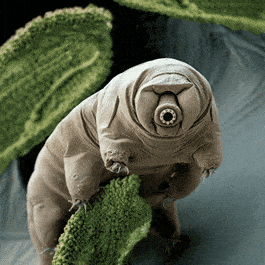
Don't be a Butthole! Practice Safe Sex!
#giphy#united nations#sdg#soil#biodiversity#fao#gsp#sustainable development goals#food and agriculture organization#egyptiancat204#soils#faosoils#global soil partnership#gsobi#healthy soils#soil biodiversity
3 notes
·
View notes
Text
Building a shared future for all life.
This year, the World Biodiversity Day focuses on
"Building a shared future for all life".
The slogan was chosen to continue building momentum and support for the post-2020 global biodiversity framework adopted at the UN Biodiversity Conference #COP15.
#nature based solutions#cop15#biodiversity#terrestrial biodiversity#biodiversity conservation#soil biodiversity#marine biodiversity
3 notes
·
View notes
Text
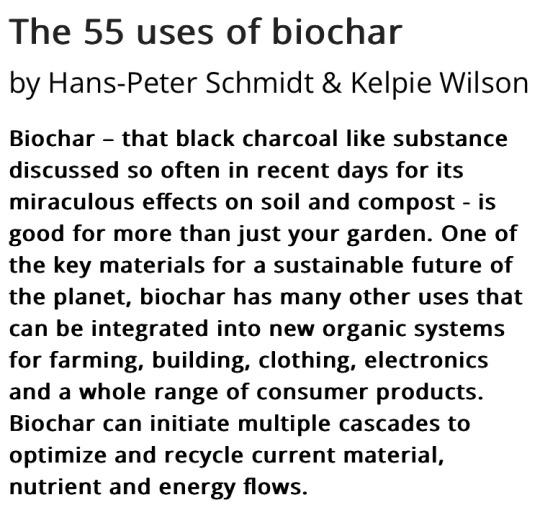
0 notes
Text
Female crane fly (family Tipulidae) laying eggs. I knew some species lay eggs in soil, but wasn’t expecting it to look this silly 😆
While most crane fly adults don’t feed (they’re not giant mosquitoes!), most larvae eat dead plant matter. Larvae are an important part of the soil ecosystem because they convert organic matter into nutrients that plants and other life forms can use. Crane flys are also an important food source at all stages of their life for everything from spiders to song birds.
#crane fly#tipulidae#diptera#mosquito hawk#gollywhopper#beneficial insects#soil#soil science#ecology#nature#bugs#biodiversity#animals#inaturalist#arthropods#bugblr#entomology#insect appreciation#funny bugs#funny video#needs squeaking bed noises#or dorky music#leather jacket#flies are cool#flies#not all flies are bad#don’t squish bugs#biology nerd#invertebrates
74 notes
·
View notes
Text
Farmers and gardeners are often pleased to see earthworms slithering through their soil. But how much do they actually help plants grow? According to the first worldwide estimate of the invertebrates’ contribution to crop yields, earthworms add more than 140 million tons of food each year. For wheat harvests alone, that’s roughly equivalent to one slice in every loaf of bread.
“It is a very important and interesting finding,” says Helen Phillips, an ecologist at Saint Mary’s University who was not involved in the study, published today in Nature Communications. “It really highlights the importance of earthworms, alongside other soil organisms, as providers of ecosystem functions and services.”
Earthworms do many things to make soil more fertile. By feeding on dead plant matter, they release nutrients much faster than soil microbes would by themselves. They also improve the physical structure of soil. As worms digest plant matter, they excrete tiny, stable clumps of particles. Together with the earthworm burrows, these aggregates make soil more porous. This allows rainwater to soak in and enables roots to grow more easily.
105 notes
·
View notes
Text

There is a certain feeling you get when you grow great soil that grows great food.
#soil health#compost#lettuce#onions#atlanta urban ag#raised beds#food systems#food access#biodiversity#permaculture#maurice small
113 notes
·
View notes
Text
Lawns and Variation
Lawns most often consist of grasses and clover kept short by mowing. For decades in the United States of America, they were an important aspect of conformity. To this day, lawn maintenance is a key focus of many Homeowner Associations (HOAs). Through media and HOA policies, lawns grown out of control are associated with neglected land and poverty.
A short, well-kept lawn can be very aesthetically pleasing. It also reduces concerns about ticks and other pests. Maintaining one through regular mowing can provide homeowners a reason to spend time outside, and be part of important routines that help people keep their lives on track. Additionally, a short lawn is ideal for outside activities for pets, children, and adults. Of course, not maintaining one’s lawn can also lead to fines if part of an HOA.
The negatives of monoculture lawns, however, far outweigh the potential benefits.
The Negatives
Reducing biodiversity is the best-known way in which typical lawns cause damage. Persistent mowing keeps many species of plants from succeeding. Low biodiversity directly contributes to low ecosystem resilience1. For example, when a pest or fungus comes along that wipes out one type of plant, an entire field or dozens of fields will be wiped out because they are all the same plant. That leaves the land susceptible to erosion, flooding, and desertification (i.e arid land).
Low biodiversity means worse conditions for other forms of life, as well. Regular mowing to keep the grass short and uniform also keeps different floral plants from growing, thus reducing resources for pollinators1.
Persistent mowing also acts as an unnecessary addition to greenhouse gas production. Gas-powered lawn equipment contributes significantly to CO2, NOx, and volatile organic compound (VOC) emissions3. The amount of carbon equivalent pollution from lawn mowing and fertilizer use more than negates the benefit of carbon sequestration (CO2 kept out of the atmosphere) in grass yards2.
For many, yard maintenance also involves fertilizer and pesticide use. Fertilizer use contaminates waterways, primarily through rainfall, and causes algal blooms and decreased oxygenation in waterways. Pesticides can also pollute waterways. In fact, a majority of applied pesticides end up in soil, water, and air, and end up entering the food chain where they negatively affect a wide range of animals, including humans5. Pesticide contamination in humans has been linked to conditions like cancers, neurological issues, obesity, and neurological issues, to name a few5.
Lastly, lawns can need excessive amounts of water. On average, about 9 billion gallons of water goes to watering lawns in the U.S.A. every day6. This is made worse by poor watering practices, causing much of that water to be lost to evaporation and runoff. Water is considered a renewable resource, but that is contingent on proper maintenance and management.
Grass lawns around the world consume an abundance of resources and toxic materials to maintain. Maintaining a grass lawn is ecologically harmful because of pesticides, fertilizers, petroleum pollution, low biodiversity, erosion, and water use.
Cultivating native flora instead nullifies the need for these measures. Native plants are physiologically adapted to the local climate and conditions, and thus need less, if any, watering7. They are less likely to need pesticides or fertilizers, and their deeper root systems decrease soil erosion8. The reduced use of lawn equipment vastly improves air quality, and provides a much more interesting view than a monoculture yard8.
Clover
Transitioning a lawn from short, uniform grasses into a more biodiverse, environmentally healthy yard can be very difficult, and potentially impossible for some people. It doesn’t have to be all or nothing, though. Fostering the growth of clovers instead of grasses, for example, can be a good step for your soil.
Clovers include about 300 species with native varieties in many parts of the world, including Europe, central Asia, North America, and Africa. Clovers generally need minimal maintenance and, if allowed to flower, provide valuable resources for native pollinators9. Clover is also esteemed for its nitrogen-fixing properties. Like many legumes, clover species pull nitrogen from the atmosphere and increase nitrogen availability in soil10.
Converting grass lawns into areas for various native flora has many benefits for the environment and the land-owner, who can enjoy beautiful flowers and bushes while improving air and water quality. While a clover lawn is not as beneficial in these aspects, they can still be an important way for people to start improving their lawn. Fortunately, many more websites now exist to guide land-owners in cultivating native plants. There is always something you can do to help.
Additional Resources
1. https://besjournals.onlinelibrary.wiley.com/doi/pdf/10.1111/1365-2664.13542
2. https://link.springer.com/article/10.1007/s00267-012-9967-6
3. https://www.epa.gov/sites/default/files/2015-09/documents/banks.pdf
4. https://www.ctahr.hawaii.edu/kaufmana/downloads/Kaufman%20Lawn.pdf
5. https://link.springer.com/article/10.1007/s40726-018-0092-x
6. https://19january2017snapshot.epa.gov/www3/watersense/pubs/outdoor.html
7.https://www.montvillenj.org/DocumentCenter/View/155/Choose-Plants-That-Are-Native-to-the-Area-That-Are-Drought-Resistant-PDF?bidId=#
8. https://archive.epa.gov/greenacres/web/html/index.html#
9. https://www.oneearth.org/the-various-advantages-of-clover/
10. https://onlinelibrary.wiley.com/doi/pdf/10.1002/its2.19
11. https://www.sciencedirect.com/science/article/pii/S1618866715000436
#monoculture#lawns#suburban lawns#grass#clover#flowers#flora#climate change#environment#resources#research#article#soil erosion#runoff#pesticides#fertilizer#planting#garden#biodiversity#ecological resistance
4 notes
·
View notes
Text
youtube
A must watch 🙂▶️ The message, wisdom, and the bold yet respectful timbre of Zach's voice are so powerful and mesmerizing; you can clearly see that Jay is somewhat overshadowed by him. A pure bliss if you can spare the time.
#zach bush#microbioma#farming#nutrients#matrix of life#biodiversity#mitochondria#health#food#resilience#cannection to nature#soil#growing food#anti cancer#inspiration#chronic#what we eat#community#regenerative agriculture#movement#nature#water#growing#Youtube
5 notes
·
View notes
Note
13 + 16 for the book asks!
OHH SPICYY I LIKE
13. What were your least favorite books of the year?
hmm i wanted to do top 5 but there are only 4 i feel are really noteworthy:
-bunny by mona awad. not necessarily bad, not necessarily good. i did not enjoy most of the reading experience and mostly just wanted it to be over, but i'm not sure if it's because i was simply uncomfortable reading a thriller/horror novel or if it really was kinda insufferable. it def had insufferable elements, and i feel that every book that tries to be a satire of pretentious academic settings has the element of the insufferable in its design.. it's a don't wanna beat them, dont wanna join them kinda deal the way i see them. not really my thing, but i had heard it was going to be weird and intriguing and it definitely was.. but still, i was unsure what to think of it at the end and the reading experience was so stressful to me that i don't really want to go back and try to get to the heart of the matter.. so it's behind me now!
-babel by r. f. kuang. this book is also not necessarily a bad book. i just feel that it had a delicious potential in its themes (oh god..) but it was kinda uninterested in exploring its own potential.. too much is revealed to the reader in exposition too soon instead of the secrets and peculiarities of the world being gradually revealed, which imo makes it a poorly written fantasy. i also found the pacing to be poor, it was a long book and it still felt rushed to me. it did have its moments though and the writing was way easier to digest in its whole.
-carmilla by sheridan le fanu. now we're crossing into actually bad territory. this is a reread, but my first time reading it in english and not in translation. nope, i still think it's bad! outside of its role in canonizing the vampire, and the lesbian vampire at that, it's just not a good read to my eyes! dont even waste time coming over to revoke my lesbian card for speaking on this, i'll had it over willingly idgaf <3
-hex by rebecca dinerstein knight. if you've never heard of this book before, keep it this way is my advice.. yo... it's bad.... niche book club pick that we all ended up regretting. at least it was short and i could knock down the audiobook in a day, but at what cost! it still sucked! an actually poorly written and insufferable book.
16. What is the most over-hyped book you read this year?
i understand why it's hyped and loved, but in terms of a book not living up to my expectations, babel
in terms of me liking a book (series, in this case) but for my own reasons removed from the reason everyone else recced it to me for, the locked tomb series
#ty for giving me my much needed chance to be a hater! ty for respecting the natural biodiversity of this blog.. needs a hater post to feed#the soil once in a while..#thalassiokhtos#the locked tomb's constant memeing and writing style grind my gears so bad but it still got me#still got me!#asks#ευχαριστω πολυ και καλη χρονιααααα <3
5 notes
·
View notes
Text
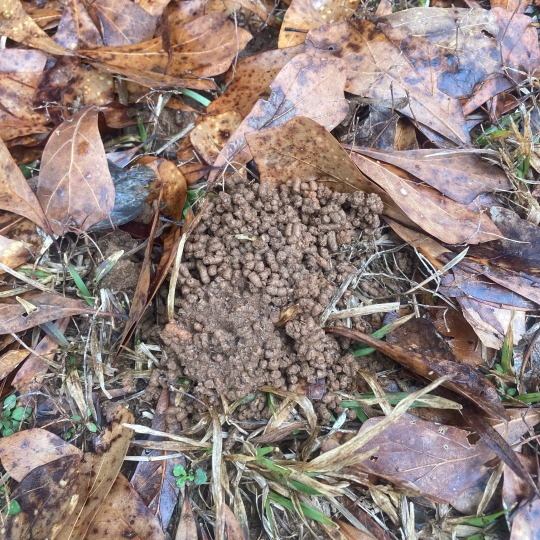
Aeration… air, worm holes, elimination of waste that is a benefit to the entire system. These piles of worm poo give me inspiration. They excite me to continue to create healthy soil. They encourage me to share with others the dimensional joy of observation. Nature is abundant and we are responsible to keep it that way.
Save the soil.
Save the butterflies.
#visionary growing solutions#compost#simple food small farmz#biodynamic#soil#soil biology#atlanta urban ag#biodiversity#permaculture#worms#worm poo#worm castings#simple food small farmz air bnb agriculture experience#simple things#atlanta airbnd experience#air bnb experience atlanta#simple food#maurice small
27 notes
·
View notes
Text

Sending y’all peace, fresh veggies and blessings in 2023 and beyond.
#tuscan kale#red sails lettuce#romaine lettuce#healthy soil#vermicomposting#compost#food security#atlanta urban ag#soil biodiversity#permaculture#biodynamic#food access
61 notes
·
View notes
Link
Excerpt from this story from The Revelator:
Look down. You may not see the soil beneath your feet as teeming with life, but it is.
Better scientific tools are helping us understand that dirt isn’t just dirt. Life in the soil includes microbes like bacteria and fungi; invertebrates such as earthworms and nematodes; plant roots; and even mammals like gophers and badgers who spend part of their time below ground.
It’s commonly said that a quarter of all the planet’s biodiversity lives in the soil, but that’s likely a vast understatement. Many species that reside there, particularly microorganisms such as viruses, bacteria, fungi and protists, aren’t yet known to science.
“Published literature has only just begun to unravel the complexity of soil biological systems,” a 2020 study by researchers from University of Reading found. “We barely know what is there, let alone their breadth of functional roles, niche partitioning and interaction between these organisms.”
But what scientists do know is that healthy and biodiverse soil communities support a wide variety of functions that sustain life on Earth. That includes nutrient cycling, food production, carbon storage and water filtration.
What happens belowground supports life aboveground. And not surprisingly, if that underground biodiversity is threatened, so are the important functions that soil performs.
“When soil organisms begin to disappear, ecosystems will soon start to underperform, potentially hindering their vital functions for humankind,” wrote researchers in a 2020 Science study.
Unfortunately there’s evidence that soil biodiversity is decreasing today — how badly is still a matter researchers are working to determine. By just one metric, studies found that 60–70% of soils in the European Union are now unhealthy.
The threats there — and across the world — are numerous.
The Reading University researchers narrowed them down to five main areas:
Human exploitation, including intensive agriculture, pesticides, fertilizers and genetically modified organisms.
Land-use change like deforestation, habitat fragmentation, and soil sealing.
Soil degradation from compaction, erosion, and loss of nutrients.
Climate change, which influences temperature and moisture.
The growing threat from plastic pollution.
16 notes
·
View notes
Text
Protecting Biodiversity and the Integrity of Forests in the Dong Phayayen-Khao Yai World Heritage Site.
The management challenges in Dong PhayayenAKhao Yai are serious and complex. A major, integrated investment programme is needed, building on UNDP’s Catalysing Sustainability of Thailand's Protected Area System (CATSPA) project and on DNP’s master plan for DPKY. The programme would act at the following levels:
Research and database
Update database on status and trends in biodiversity in DPKY (possibly in collaboration with the PAD2 project ("Protected Areas, Development, and Climate Change in the Greater Mekong Sub-region" project - currently under development);
Assess carbon storage potential and economic valuation of DPKY;
Identify critical areas for forest restoration and protection to link research with conservation
Strengthening of ranger force
Ensure that the ranger force is provided with all the necessary field equipment, including uniforms, boots, tents, sleeping bags, backpacks, binoculars, GPS units, radios, etc. by building on the USAID funded Asia's Regional Response to Endangered Species Trafficking (ARREST) programme;
Provide additional training and capacity building to the ranger force in the use of MIST (Management Information System) and the latest SMART (Spatial Monitoring and Reporting Tool) patrolling techniques and innovative park-based technology support (Field Information Support Tool);
Law enforcement and judiciary
Organise seminars and set up working groups with representatives from the judiciary system with the aim of increasing the proportion of cases successfully prosecuted and strengthening penalties imposed in judgments for wildlife-related crimes;
In collaboration with the Thailand Department of National Parks, Wildlife and Plant Conservation (DNP) and a special government unit devoted to national security called the Internal Security Operations Command (ISOC), organise seminars and set up working groups with customs and border control units to raise awareness on the issue of illegal logging of Rosewood and wildlife poaching and strengthen detection and law enforcement;
Park management
Support DNP to develop an updated management plan for the entire World Heritage complex with the aim of providing objectives for the management of the entire area in an integrated way and to promote collaboration and coordination among the different units. At the moment, each protected area in the complex is managed as an individual unit and there is relatively little sharing of information or resources;
Support DNP and RFD to develop a management strategy for the wider landscape, to ensure that surrounding land-uses are compatible, that any infrastructure development projects are sustainable and that key ecological corridors are maintained;
Forest restoration and transboundary natural resource management
Promote restoration of degraded areas in and around the protected areas (including encroached areas that have been reclaimed by the National Parks, National Reserve Forest, land under the Agricultural Land Reform, and private land) using techniques such as enrichment planting and assisted natural regeneration (ANR) in collaboration with DNP, RFD, civil society organizations and private sector entities. This will also include the planting of high-value timber species in in situ and ex situ conservation sites (i.e., inside and outside the protected areas);
Foster transboundary collaboration on ecosystem services, watershed and natural resources management between Thailand and Cambodia;
Buffer zone management and surrounding communities
Promote alternative livelihoods for surrounding communities in selected areas in order to provide new sources of income, such as ecotourism activities, agroforestry and family forest and farm practices. This may include the planting of high-value timber species, as well as edible species, wild fruit and medicinal plants to restore forest on farmland while at the same time encouraging communities living around the World Heritage Site to develop alternative livelihood opportunities through "wise use" practices based on the concept of sufficiency economy, as well as vocational training to provide alternative livelihoods to poachers;
Create a buffer zone between the protected area and community utilized areas, ensuring that the buffer zone is properly managed with the collaboration of the national park officers and community members living adjacent to the national parks;
Develop more participatory models of management that actively involve local communities, as well as benefit sharing arrangements and mechanisms and rules for the conservation and sustainable use of forests, and mechanisms that address human-wildlife conflicts. This will also include the establishment of community forests in national forest reserves;
Develop and implement an intensive environmental education programme in the villages surrounding the park to enhance the understanding and raise awareness of the ecology and values of the forest and to promote the conservation of forest resources by communities and local governments;
International dialogue
Promote high level forums and investigative networking groups involving Thailand, Cambodia, Lao PDR, Viet Nam and China on the issue of illegal logging of Rosewood and wildlife poaching
The protection of Dong Phayayen-Khao Yai is critical to achieving the targets set out in Thailand's Integrated Biodiversity Management Plan 2013-2021. In addition, the outcomes of this project will be beneficial to other protected areas in Thailand, where Rosewood and wildlife poaching is also an issue.
Thus, the overall goal of this project is to significantly reduce the threats to biodiversity and the integrity of forests in the Dong Phayayen-Khao Yai Forest Complex.
Protecting Biodiversity and the Integrity of Forests in the Dong Phayayen-Khao Yai World Heritage Site.
#Thailand#Forest Biodiversity#biodiversity#ecology#biodiversity conservation#terrestrial biodiversity#soil biodiversity#assisted natural regeneration (ANR)#integrity of forests#biodiversity threats#Wildlife poaching#Rosewood#Forestry resource management#MIST (Management Information System)#illegal logging
0 notes
Text
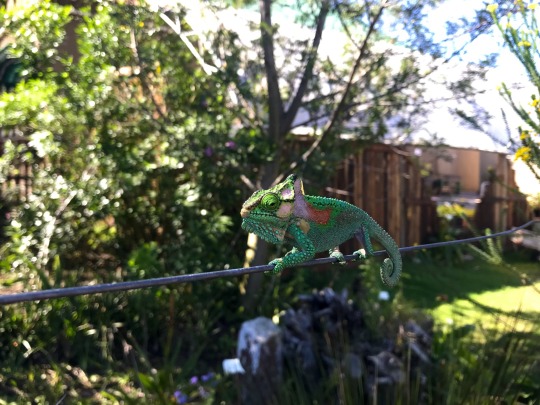
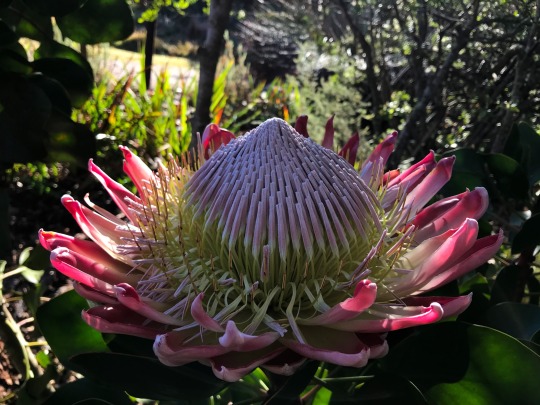

The extensive beauty of the Southern Cape 🌱
Photographs taken by, Lezelle Frank 🍄
#Nature#Southern Cape#Garden Route#Biodiversity#Knysna Dwarf Chameleon#King Protea#Protea cynaroides#Fungi#Mushroom#Soil#Earth#Love
3 notes
·
View notes